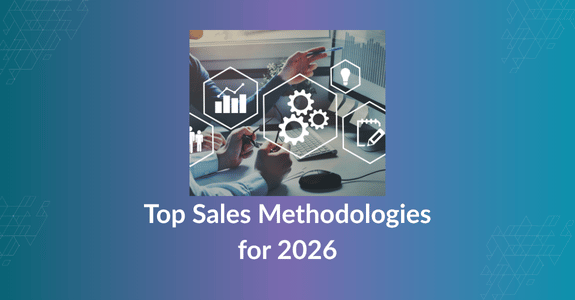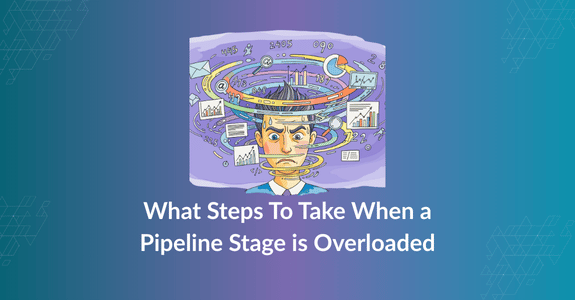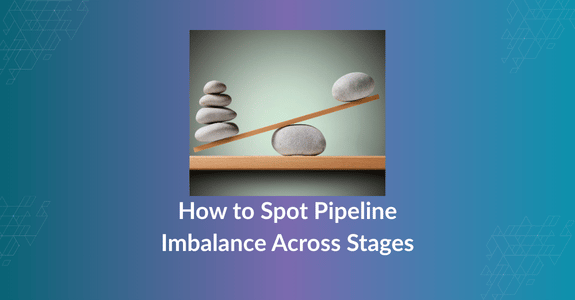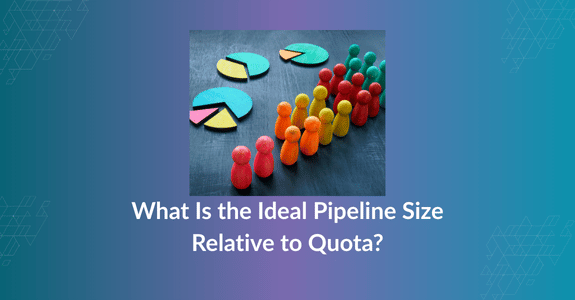Top Sales Methodologies for 2026
by Mentor Group

Introduction: The End of Linear Selling
By 2026, the buyer–seller relationship will have evolved beyond recognition.
Buyers will no longer depend on salespeople to uncover their needs or introduce solutions — they arrive informed, equipped, and often more than halfway through the decision process. Sellers, in turn, have shifted from transmitters of information to interpreters of insight.
In industries from SaaS to pharmaceuticals, the modern sales professional operates in a world defined by buyer autonomy, digital transparency, and data-enabled choice.
This transformation has not rendered traditional sales methodologies obsolete, but it has forced them to adapt. The methods that succeed now are those that balance structure and empathy, process and adaptability, and technology and trust.
This paper examines how leading sales methodologies — Consultative, Solution, Challenger, SPIN, MEDDIC, and INFINITE Selling — fit the landscape of 2026.
Rather than competing frameworks, they represent different responses to one truth: the empowered buyer now defines the sales process.
For summary FAQs, use the list below:
- What are the top sales methodologies for 2026?
- How has the empowered buyer changed selling?
- When should I use Consultative Selling in 2026?
- How should Solution Selling evolve?
- What distinguishes modern Challenger Selling?
- Do SPIN and MEDDIC still matter?
- What is INFINITE Selling?
- Should I pick one methodology or blend them?
The 2026 Buyer: Independent, Informed, and Intolerant of Friction
Today’s buyers must navigate an abundance of data while dealing with limited attention.
McKinsey’s 2025 B2B Pulse found that 70% of corporate buyers prefer self-service digital interactions for research and evaluation. Yet, paradoxically, they still seek human expertise when decisions become complex or risky.
For example, in FinTech, buyers rely on peer reviews and compliance whitepapers long before contacting vendors. In Pharma, procurement teams run predictive models on supplier data before even engaging with sales.
The result is the sales conversation often begins after the buyer’s initial conclusions have formed.
To stay relevant, sellers must master three skills:
- Interpretation — turning data into meaning.
- Empathy — understanding the buyer’s unspoken motivations.
- Orchestration — guiding multi-stakeholder journeys without imposing process.
This is where modern sales methodologies diverge — in how they organize these capabilities.
Let’s take a look at some of the most popular methodologies and see how they are fit for 2026.
Consultative Selling: The Human Engine of Trust
Emerging in the 1970s, Consultative Selling was revolutionary in placing the buyer’s needs at the centre of the interaction. It emphasised active listening, open questioning, and tailored recommendations.
Fit for 2026
In the data-saturated world of 2026, Consultative Selling’s strength (empathy and collaboration) is going to be more relevant than ever. What has changed is how listening occurs.
In SaaS, for instance, listening is augmented by telemetry data (e.g. user behavior, adoption patterns, and renewal risk indicators). In financial services, consultative sellers analyse transaction data and risk appetite before initiating contact.
Technology now amplifies empathy. But the principle remains the same — advice is earned through understanding.
“Consultative selling has evolved from conversation to calibration — interpreting signals to meet buyers where they already are.”
Limitations
Consultative Selling can struggle when buyers move faster than sellers’ discovery processes allow. Without analytical support, “listening” alone risks being reactive rather than insightful.
Solution Selling: From Diagnosis to Design
Solution Selling, popularised in the 1980s and 1990s, trained sellers to uncover a customer’s pain points and position their product as the remedy. The logic was sound when buyers lacked information, but in 2026, the challenge is different.
Fit for 2026
Modern buyers already understand their problems. The opportunity lies in problem reframing, helping clients see existing challenges in a broader or more strategic context.
In FinTech, for example, this might mean showing how faster payments are not merely about speed, but about liquidity optimisation. In Pharma, a software provider might reframe data integration not as a technical task but as a route to regulatory readiness.
“The new solution seller doesn’t diagnose problems; they design outcomes.”
Limitations
Solution Selling’s linear, discovery-heavy sequence can feel outdated for self-directed buyers. To remain relevant, it must integrate predictive data and collaborative design thinking.
Challenger Selling: Insight Meets Empathy
The Challenger model emerged from research showing that top performers succeed by teaching customers something new — challenging assumptions rather than merely responding to needs.
Fit for 2026
In a world where AI-generated insights are ubiquitous, the modern Challenger must balance provocation with humility.
If we look to SaaS and tech businesses which have embraced Challenger Selling, this means showing not why a system is broken, but how peers are achieving measurable efficiency through transformation.
Done well, it positions the seller as a strategic partner, not through aggression, but through constructive disruption.
“The new Challenger sells not by shocking the buyer, but by surprising them with relevance.”
Limitations
The model risks misfire when insights lack credibility or empathy. A poorly timed “challenge” can alienate buyers already confident in their knowledge base.
SPIN and MEDDIC: Discipline in Complexity
SPIN Selling (Situation, Problem, Implication, Need–Payoff) and MEDDIC (Metrics, Economic Buyer, Decision Criteria, Decision Process, Identify Pain, Champion) remain foundational in complex B2B environments as they provide logical gates, which are simple to assess and drives accountability.
Fit for 2026
Their enduring value lies in structure. As buying committees expand — in enterprise SaaS or financial institutions, often exceeding 10 stakeholders — SPIN’s disciplined questioning and MEDDIC’s qualification rigor keep deals on track.
Modern CRM and AI tools now automate portions of these frameworks, surfacing gaps in stakeholder engagement or missing metrics in real time. In pharma, where procurement, compliance, and research intersect, these methods offer consistency amid complexity.
“In 2026, process frameworks act less as scripts and more as dashboards — ensuring clarity amid data noise.”
Limitations
Rigid application can feel transactional. SPIN and MEDDIC require contextual adaptation; without it, they risk treating dynamic buyer journeys as mechanical checklists.
INFINITE Selling: Integrating Flow and Flexibility
While the previous methodologies evolved over decades, INFINITE Selling was designed for the digital-first, buyer-led world from inception. Developed around eight interdependent principles — Interest, Need, Friction, Intent, Navigate, Inspire, Timing, and Execute — it positions selling as a continuous flow rather than a fixed sequence.
Fit for 2026
INFINITE Selling aligns intuitively with the modern sales environment:
- Interest focuses on creating relevance amid information overload — vital for crowded SaaS and FinTech markets.
- Need extends beyond explicit requirements to uncover the emotional and strategic drivers behind decisions.
- Friction addresses the true barrier to progress: complexity. In enterprise contexts, simplifying procurement and onboarding can matter more than discounting.
- Intent brings alignment — ensuring seller and buyer purposes converge rather than collide.
- Navigate replaces rigid funnels with adaptive maps, letting buyers choose their own path while maintaining shared momentum.
- Inspire reframes persuasion as motivation — appealing to vision rather than urgency.
- Timing integrates data analytics with human intuition to engage at precisely the right moment.
- Execute closes the loop by ensuring promises made become promises kept — turning transactions into trust.
“INFINITE Selling treats the buyer journey as a living system — guided, not controlled.”
What distinguishes it is flow — its ability to adapt to a buyer’s rhythm, whether the engagement is fully digital, hybrid, or human-led.
Limitations
Because INFINITE demands both analytical and emotional intelligence, it requires more enablement and leadership maturity than step-based models. Organisations adopting it must invest in cross-functional alignment between marketing, sales, and customer success.
Comparative Insights: How Methodologies Coexist
Each methodology remains viable because it answers a different challenge within the buying ecosystem.
|
Methodology |
Core Strength |
Modern Adaptation |
Best Fit (2026) |
|
Consultative |
Empathy, trust-building |
Data-informed listening and advisory insight |
Complex financial and service sectors |
|
Solution |
Outcome orientation |
Problem reframing using strategic context |
FinTech, pharma solutions, SaaS architecture |
|
Challenger |
Insight-driven differentiation |
Contextual, evidence-based guidance |
Tech, SaaS, strategic consulting |
|
SPIN / MEDDIC |
Process discipline |
Automated qualification and AI augmentation |
Large enterprise, regulated industries |
|
INFINITE |
Buyer-led flow and integration |
Continuous, adaptive engagement |
Cross-industry, digital-first ecosystems |
The pattern is clear: success in 2026 depends not on choosing one methodology, but on blending elements of several to fit each customer’s reality.
The Strategic Imperative for 2026
Across industries, three imperatives now define high-performing sales organisations:
Buyer Enablement Over Seller Enablement
Sales strategies must make it easier for buyers to decide — by simplifying information, reducing risk, and providing decision confidence.
INFINITE’s focus on reducing friction and clarifying execution exemplifies this shift.
Empathy at Scale
Data, AI, and automation enable personalisation, but they must serve empathy, not replace it. Consultative and INFINITE models excel here by combining digital insight with human understanding.
Continuous Qualification and Alignment
The best sellers treat qualification not as a gate but as an ongoing calibration — integrating MEDDIC discipline with real-time behavioural data.
In practice, this means sales teams in SaaS, FinTech, or Pharma are increasingly blending frameworks: using MEDDIC to qualify, Consultative Selling to advise, Challenger insights to differentiate, and INFINITE flow to orchestrate the journey.
The Future of Methodologies: Integration, Not Replacement
As AI automates data gathering and forecasting, the differentiator shifts from what sellers know to how they think.
Future-ready methodologies share three qualities:
Adaptability — they adjust to context and buyer maturity.
Transparency — they reduce friction and foster trust.
Continuity — they view post-sale success as part of the selling loop.
INFINITE’s strength lies not in superiority but in integration: it encapsulates the adaptability of Consultative, the problem-framing of Solution, the insight of Challenger, and the structure of MEDDIC — all within a flow-based system fit for the self-directed, data-driven buyer.
Conclusion: Selling as Shared Momentum
The sales methodologies of 2026 reflect a maturing profession. The best sellers are no longer gatekeepers of information; they are architects of momentum — reducing complexity, inspiring action, and ensuring execution.
Consultative and Solution Selling bring empathy and clarity. Challenger and SPIN/MEDDIC provide structure and challenge.
But it is INFINITE Selling that unites these elements into a single, adaptive philosophy: one that mirrors how buyers actually move — in loops, not lines.
“The future of selling is not a contest of methodologies. It is a convergence — an ‘infinite’ dialogue between buyer empowerment and seller insight.”
Summary FAQs
What are the top sales methodologies for 2026?
Consultative, Solution, Challenger, SPIN, MEDDIC and INFINITE Selling—each adapted to an empowered, buyer-led journey that values relevance, evidence and ease.
How has the empowered buyer changed selling?
Buyers arrive highly informed and deep into evaluation. Sellers win by interpreting signals, reducing friction across channels, and orchestrating multi-stakeholder momentum.
When should I use Consultative Selling in 2026?
Use it in complex, ambiguous situations where trust is pivotal. Elevate discovery with data (usage, intent, telemetry) so recommendations are earned—not assumed.
How should Solution Selling evolve?
Shift from diagnosing problems to reframing outcomes. Co-design with the customer, integrate predictive insights, and align value to measurable business impact.
What distinguishes modern Challenger Selling?
Insight with empathy. Teach using credible, context-rich evidence; tailor by role and risk; take control by clarifying next steps without manufacturing tension.
Do SPIN and MEDDIC still matter?
Yes—both provide discipline for complex deals. Use SPIN to deepen discovery and MEDDIC to qualify rigorously, with CRM/AI surfacing gaps in real time.
What is INFINITE Selling?
A flow-based model built on Interest, Need, Friction, Intent, Navigate, Inspire, Timing and Execute—syncing seller activity to the buyer’s rhythm across digital and human touchpoints.
Should I pick one methodology or blend them?
Blend. High performers combine Consultative for trust, Challenger for differentiated insight, SPIN/MEDDIC for consistency, and INFINITE for end-to-end orchestration.



